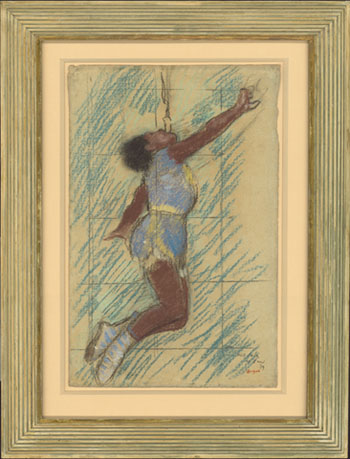During the 19th century drawings were commonly framed for display in private homes and galleries. Continuing a trend that began in the mid-1700s, drawings were increasingly appreciated as works of art for delectation rather than as objects for study, and over the course of the 1800s artists made more drawings as independent works for sale and exhibition.
The radical changes in the production and exhibition of art also affected the manufacture and style of picture frames. Due to mass production, frames became more affordable, contributing to the interest in framing drawings for display. Frame decoration, formerly carved by hand, could be pre-made from molds, resulting in an eclectic mix of styles based on historical ornament. These relatively inexpensive frames also lowered the price of antique frames, and it was not uncommon to see elaborate frames from the 1600s on 19th-century works in Salon exhibitions.
During the second half of the century, more painters began to design frames for their works. Edgar Degas sketched frame designs and often chose white frames for his own work. The Impressionist group did the same for their first exhibition, underscoring the contrast between their avant-garde paintings and the largely conservative, gold-framed works shown in the official Salons. By the end of the century, gold frames came back into fashion, though with minimal decoration.
|
 |


Miss Lala at the Fernando Circus, Edgar Degas, 1879 The frame was made in the late 1800s and conforms to the artist's own preferences. |